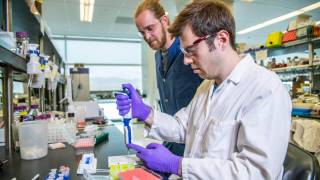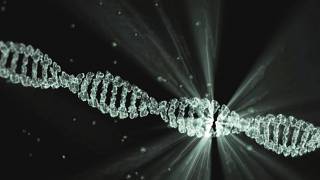Herpesvirus 6 Can Be Attacked by Killer T Cells

Most people, 95%, acquire human herpesvirus 6 (HHV-6) before the age of 3, and it is never eliminated.
Although HHV-6 does not affect the health of most people, it often leads to a disease known as roseola, Sixth Disease, and the Three-Day Fever.
For other people, HHV-6 is suspected to contribute to autoimmune diseases and often causes fever, diarrhea, and sometimes a rash known as roseola says the HHV-6 Foundation.
HHV-6 is a ß-herpesvirus of which two variant groups (A and B) are recognized, is a distant relative of herpes simplex viruses.
HHV-6A has recently been found in the uterus of women with infertility, in the thyroid tissue of patients with Hashimoto’s thyroiditis and has been suggested as a trigger for a subset of MS and chronic fatigue syndrome cases.
Although rare, an initial infection HHV-6B infection can also cause febrile seizures, encephalitis or intractable seizures.
One thing is certain: patients with severely weakened immune systems have difficulty keeping the virus under control, which in some cases can result in serious damage to multiple organs.
Reactivation can occur in the brain, lungs, heart, kidney and gastrointestinal tract, especially in patients with immune deficiencies and transplant patients. Except in acute infections, the viral DNA can typically be found only by biopsy, as it does not circulate in peripheral blood.
To counter this risk, scientists at Helmholtz Zentrum München are investigating how the immune system keeps the HHV-6 virus in check.
“We are studying the toolbox of the immune system,” says Dr. Andreas Moosmann, head of the HOCOVLAR* Research Group, within the Research Unit Gene Vectors.
“Now, we’ve discovered several interesting new tools that we’ve already been able to recreate in the lab.”
Specifically, the researchers set out to identify those components of HHV-6 that could serve as targets for CD8-positive cells, also known as killer T cells.
T cells mediate the body’s cellular immune response. As soon as antigens are identified in the body, T cells begin to differentiate in order to carry out various defense functions.
Led by first author Larissa Martin and doctoral student Alexandra Hollaus, the researchers discovered 16 structures of the virus that HHV-6-specific killer cells can bind and attack.
To this end, these scientists succeeded in producing T cells that actually latched onto their target and destroyed the infected cell.
“We were able to show that very dissimilar proteins of the virus can serve as such attack structures,” Dr. Moosmann explained.
“We also observed that T cells directed against those structures commonly occur in healthy individuals as well as in transplant patients who control their infection."
In the long term, Dr. Moosmann and his team want to apply their findings to new treatments. Further development of HHV-6 vaccines will require a detailed understanding of the virus-specific T cell response in health and disease.
“It might be possible to prevent a breakout of the virus by administering HHV-6-specific killer T cells to patients.”
“But, before that can be done, we still have a lot of work ahead of us.”
This work was supported by Deutsche Forschungsgemeinschaft (SFB-Transregio 36, project A4, to AM; www.dfg.de). The funders had no role in study design, data collection, and analysis, decision to publish, or preparation of the manuscript. And the researchers did not disclose conflicts of interest.
Our Trust Standards: Medical Advisory Committee


























